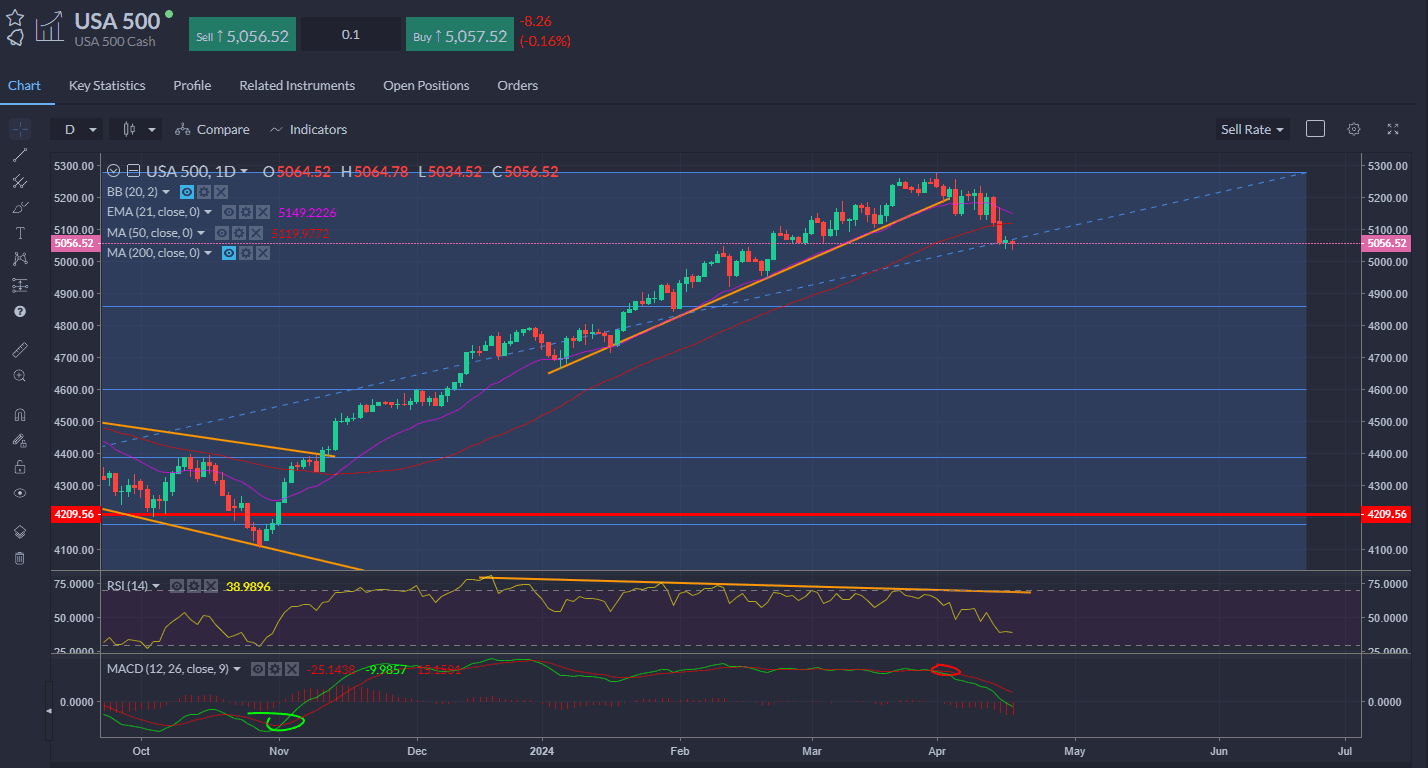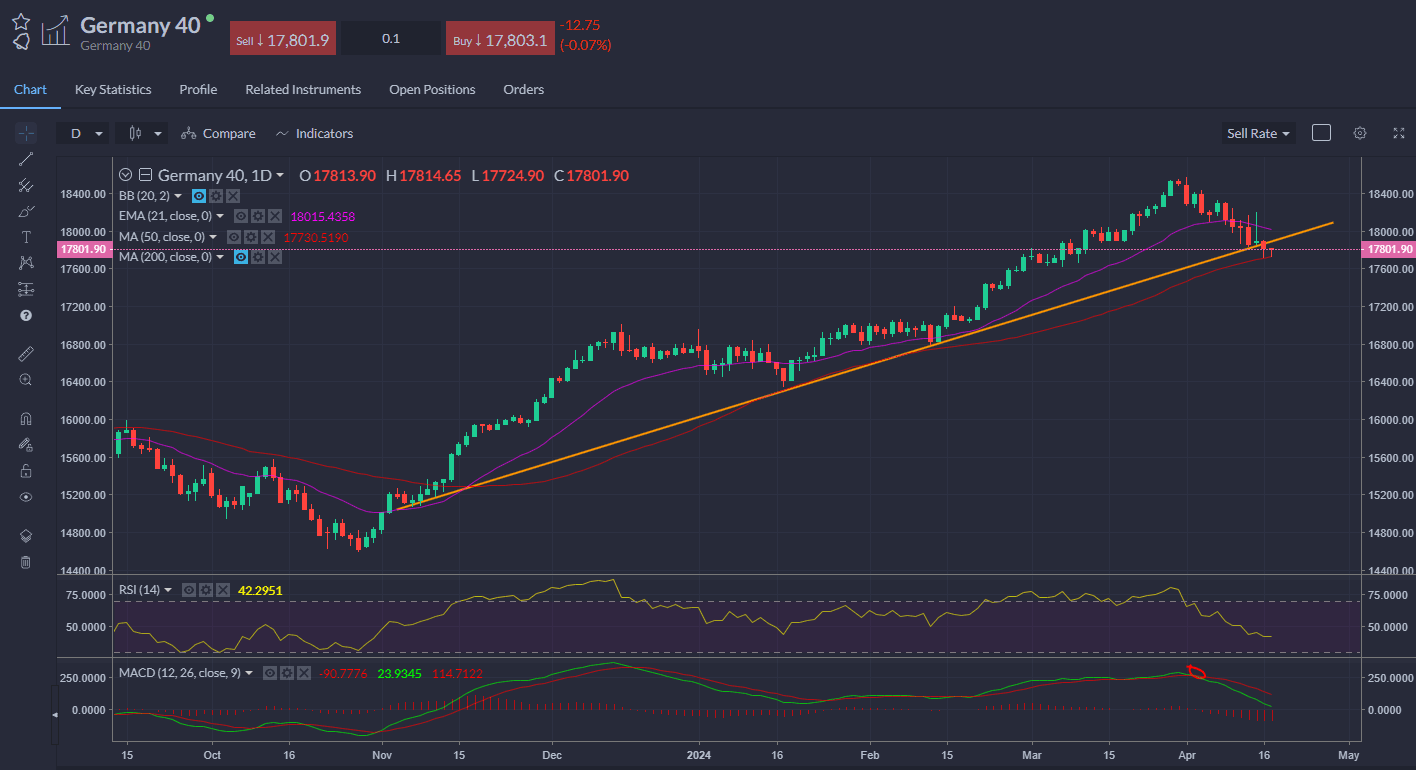Wednesday Apr 17 2024 10:53

5 min

More or less inflation: UK inflation, as measured by the Consumer Price Index (CPI), declined to 3.2% in March, down from 3.4% in February. But this was less of a drop than expected, so the market is saying sterling should be bid because of the BoE’s reaction — less is more.
Core UK inflation was more encouraging, still even if it’s not quite as much of a decline as expected – down to 4.2% from 4.5%. BoE Governor Andrew Bailey speaks today.
Meanwhile, Federal Reserve Chair Jay Powell said that "it's likely to take longer than expected" for the FOMC to have confidence that inflation will return to target. That of course is after last week’s hotter-than-expected CPI inflation print. He said the Fed could keep rates steady for “as long as needed” — so “higher for longer” returns officially, pointing to a cautious Fed while the chances of a June interest rate cut are evaporating. He also said that 12-month core PCE was likely to be little changed at 2.8%.
Obviously we have been saying for ages that inflation would be higher for longer – the whole lumpy disinflation argument, structurally higher due to supply chains, deglobalisation, de-anchoring of expectations, fiscal stimulus, etc.
The question mark was always over the reaction of the central banks – spooked by the recent uptick in the US inflation rate, they may be moving to tacit acceptance of inflation being “higher for longer” a little more slowly than I had thought. Markets indicate a roughly 15% chance of a cut in June – down from 60% a month ago. Remember, however, that the Fed has twice raised its core PCE outlook whilst still sticking to cuts — they still think that they are 300bps above neutral but the messaging from Powell was clearly pushing out any cuts to later in the year.
Meanwhile, the European Central Bank is sticking to the June cut and talking about disinflation. BofA reckons that the Fed is not so far above neutral: “We expect the terminal rate to be 3.5-3.75% in this cutting cycle, up 50bp from our previous forecast.”
"Higher for longer” for the Fed is pushing up USD and pressuring risk. USDJPY has risen close to 155 and the Bank of Japan may be about to intervene. Overnight, we heard the usual jawboning but nothing concrete yet. EURUSD has come up a bit off a 5-month low struck yesterday, whilst GBPUSD has had a stronger bounce after the UK data.
European equity markets moved up a notch after their worst day in nine months. With UK inflation numbers in, the FTSE 100 dipped below 7,800 at one stage and is trading only a little above the level this morning. Wall Street was mixed with the Dow Jones index up a bit and S&P 500 down a bit, now decisively below its 50-day SMA for the first time since early November.

Germany’s DAX index is testing the 50-day line.

When considering shares, indices, forex (foreign exchange) and commodities for trading and price predictions, remember that trading CFDs involves a significant degree of risk and could result in capital loss.
Past performance is not indicative of any future results. This information is provided for informative purposes only and should not be construed to be investment advice.